(Why so much usage for only a few numbers?)
http://threesology.org
Let's start this page with a few links to different perspectives of the "threes" phenomena.
- Biology as Poetry (3-to-1 ratio) (By Dr. Stephen T. Abedon)
- (Tricyclopedic) Book of Threes (By Michael Eck)
- List of Threes in human anatomy (By Dr. McNulty)
- Mathematical Dimensions of Rhetoric: Three is the dominant
numerical motif (By Dr. Allen H. Merriam)
- Phenomenology - Threefoldness (By Tom Van Gelder)
- "The Third Way of Evolution"(By James Shapiro, Raju Pookottil, and Denis Noble)
- Mystical Numbers: The Number 3
- The Power of Three: Why Fairy Tales
Often Feature a Triple
- Wikipedia discussions about various "3" denoted ideas
Here are three links for Dr. Dundez's article "The Number Three in the American Culture" which appeared in an old 1967-1968 book entitled "Every Man His Way" (which is a collection of different Cultural Anthropology readings):
And let me acknowledge the greatly valued assistance of Simon Kelsey whose own research and exploration efforts into the Threes Phenomena has offered invaluable insights and provided numerous links from which were derived ideas that have led to a greater understanding. I am indebited to him.

For those of you who have been recently introduced to the idea that there are numerous examples with a "three" theme or orientation, as well as those who are particularly very familiar with the idea, let me provide a different sort of perspective with respect to an interest not only in the "threes" phenomena, but also other patterns we come to associate with a number symbol. For example, if you pick up a book or come across a webpage focused on providing you with examples of ideas with a specific number in mind, or even about the history of number usage development, you may or may not notice that the collection is limited in referencing of how humans have used and are using numbers. Frequently, we find authors (myself included) who resort to making some reference to other ideas by using the word "etc...". Whereas some authors are aware of additional examples and feel that many readers are also aware of other examples and therefore do not need to list but a few, other authors only think they may be additional examples. In any respect, even if every single example of a given number symbol were listed, what we would find is that there is a limitation as to the quantity of numbers being used to reference different patterns In other words, we are confronted by an absence of most numbers. In still other words, out of all the trillions of available numbers, we humans use only a very small fraction in our behaviors. In fact, there is a limited quantity of 'enumeratable' patterns in biology, physics, etc.
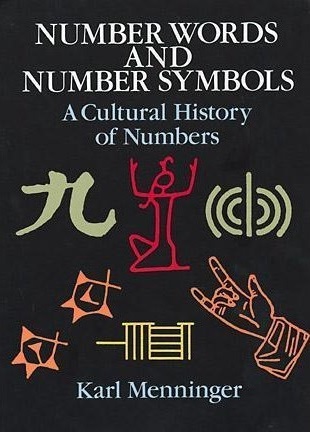
Open up a book on numerology and you will find that there is only a handful of number patterns being referenced. But even if there were a thousand, this too would be a limitation. The point to be made is that while I have focused primarily on cataloguing various "threes" in different subjects, I am aware that there are other number patterns but that the total quantity of number patterns being used is very small. While we may say this is a limitation, we can also describe this as a conservation. There is a conservation of number usage. I speculate that this is because only a few number patterns are required for life forms on this planet to survive... relatively speaking. Like DNA and RNA having triplet coding systems and not coding systems with a larger or multiple number patterns, the environment of the third planet from a source of solar energy (the Earth), dictates to biology such a requirement of conservation. It's not that we are unable to think in higher numerical values, it's just that the conditions of the environment to which we are exposed influences the patterns we use. While some patterns appear to be more culturally influenced than others which appear to be more universally used, all of these numbers are part of the overall limitation.
Hence, the limitation of number-pattern usage in our beliefs, ideologies, and theories is due to an overall survival requirement that appears to also limit our imagination. However, in looking at the environment, we note that there are at least three identifiable deteriorations taking place:
- The Sun's energy is burning out.
- The Rotation of the Earth is slowing down.
- The Moon is receding (moving away) from the Earth.
Whereas the frequent response I encounter in my discussions is that these events occur over massive amounts of time, the variable in this equation that is being overlooked is that even though these events have an accumulative incremental deterioration rate over billions, millions, thousands, and hundreds of years, the life span of biological creatures is... respectively, accelerated... and thus must be included in the deterioration rate- versus -life span rate. For example, the life span of a vinegar fly occurs very rapidly and is thus used as an experimental subject in experiments to see what effects occur over extended generations, in a relatively short span of time with respect to human capacities for observing such events:
Vinegar fly (genus Drosophila), also called pomace fly or small fruit fly Any member of a genus in the small fruit fly family, Drosophilidae (order Diptera). Drosophila species number about 1,500. Some species, particularly D. melanogaster, are used extensively in laboratory and field experiments on genetics and evolution because they are easy to raise and have a short life cycle (less than two weeks at room temperature). More studies have been conducted concerning the genetics of the vinegar fly than have been obtained for any other animal. Drosophila chromosomes, especially the giant chromosomes found in the salivary glands of mature larvae, are used in studies involving heritable characteristics and the basis for gene action. The biology of Drosophila in its natural habitats is not well known. The larvae of some species live in rotting or damaged fruits. In these species the adults are strongly attracted to, and feed on, fermenting plant juices. In other species the larvae develop in fungi or in fleshy flowers. Source: "vinegar fly (genus Drosophila)." Encyclopædia Britannica Ultimate Reference Suite, 2013. |
Interestingly, smaller life forms may have a shorter life life span than larger life forms, but the species of such small life forms may have a muc longer life span than larger species, such as when comparing cock roaches (320 million years old) to humans.

Another life span that sticks out as an everyday reference is the common idea that dogs (if not other animals) have a life span that is accelerated over that of humans, and humans... have an accelerated life span in comparison to some long-lived trees as well as geologic processes. In other words, the short spans of time that inter-generational events can take place in a given life form (including humans) must be taken into account when we look at deterioration rates. Just because a deterioration rate takes thousands of years to carve out a change highly visible to human perception of conscious awareness, does not mean there are more subtle effects not being consciously recorded... but are being recorded by physiological processes on the atomic, molecular and cellular levels.
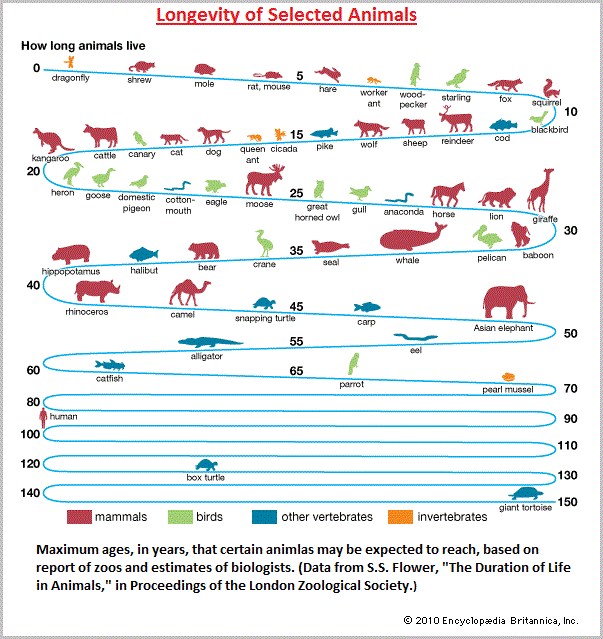
| Conifers | |||
| common juniper (Juniperus communis) | 2,000 | 544 | Kola Peninsula, northeastern Russia |
| Norway spruce (Picea abies) | 1,200 | 350–400 | Eichstätt, Bavaria |
| European larch (Larix decidua) | 700 | 417 | Riffel Alp, Switz. |
| Scotch pine (Pinus sylvestris) | 584 | ||
| Swiss stone pine (Pinus cembra) | 1,200 | 750 | Riffel Alp, Switz. |
| white pine (Pinus strobus) | 400–450 | ||
| bristlecone pine (Pinus aristata) | 4,900 | Wheeler Peak, Humboldt National Forest, Nevada | |
| Sierra redwood (Sequoiadendron giganteum) | 4,000 | 2,200–2,300 | Northern California |
 |
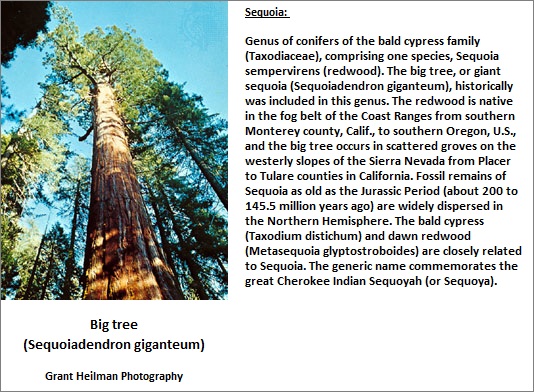
| ||
| Flowering plants: Monocots | |||
| dragon tree (Dracaena draco) |
200* | Tenerife, one of the Canary Islands | |
| Solomon's-seal (Polygonatum) |
17** | ||
| Flowering plants: Dicots | |||
| dwarf birch (Betula nana) |
80 | Eastern Greenland | |
| European beech (Fagus sylvatica) |
900 | 250 | Montigny, Normandy, France |
| English oak (Quercus robur) |
2,000 | 1,500 | Hasbruch Forest, Lower Saxony |
| Bo tree (Ficus religiosa) |
2,000–3,000*** | Buddh Gaya, India; Anuradhapura, Ceylon | |
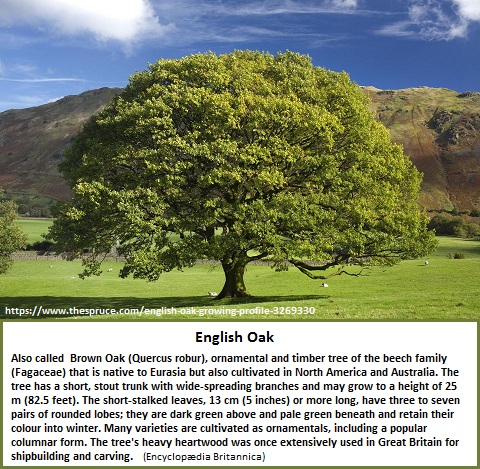 |

| ||
| linden (Tilia) |
815 | Lithuania | |
| English ivy (Hedera helix) |
440 | Ginac, near Montpellier, France | |
| *Exaggerated estimates for this historic specimen reach 6,000 years. **Scars on root-stock counted. ***According to Buddhist and Roman history. Source: "life span." Encyclopædia Britannica Ultimate Reference Suite, 2013. |
|||
It is noted that the (probable) length of life is to be distinguished from a (possible) life span, in that the length a life form lives is determined by both internal and external factors resulting in the actual length of life in a given context (such as deterioration, lack of food, water, disease, war, genetic abnormality, etc.,) as opposed to a life form born into ideal conditions relative to is physiology. For example, we note that the average life span of humans has increased over the centuries due to several different factors such as better nutrition, better water, medicine, lack of marauding raids on settlements, better clothing, etc... Yet, the total length at which humans can live has not really increased. While there may be more people reaching 100 years of age, it is only because that which is possible has become an increased probability. Nonetheless, without some fundamental changes in human genetics, humans have reached the upper limit of their life span capability.
With longer life spans, it is more difficult to determine changes occurring due to environmental (external) events and biological (internal) events. Whereas humans can more easily recognize changes in shorter life spans, those occurring with themselves may take several life times to recognize events which occurred even over short periods of time... such as a day, month, or year. While we are aware of changes taking place from birth into old age, we don't attribute much of the changes as being due to environmental factors... even though we adaptively change our behavior according to the different seasons. Not only is the "long" life spans of humans, but the seasonal life spans of fruits, vegetables and insects.
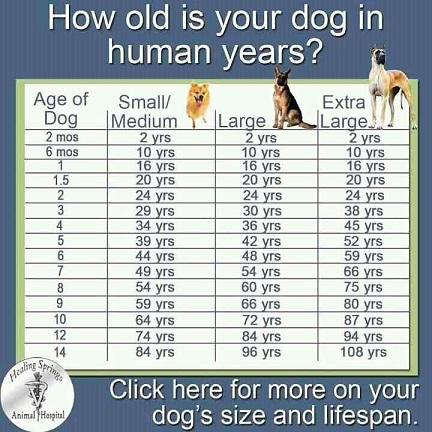 |
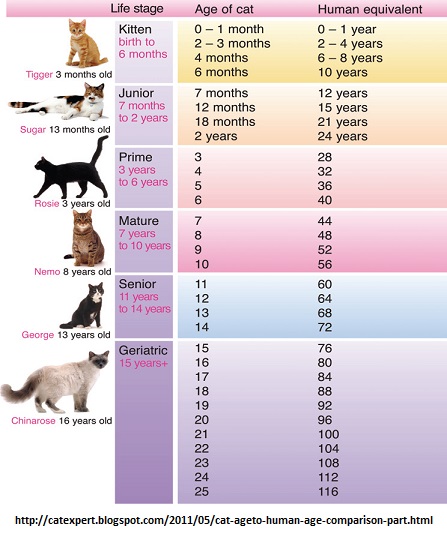 |
| Mammals | |
| bat (Eptesicus fuscus) | 2 |
| grizzly bear (Ursus horribilis) | 31 |
| cat (Felis catus) | 21 |
| chimpanzee (Pan troglodytes) | 37 |
| dog (Canis familiaris) | 34 |
| elephant, Indian (Elephas maximus) | 57 |
| goat (Capra hircus) | 18 |
| golden hamster (Mesocricetus auratus) | 1.8 |
| horse (Equus caballus) | 62 |
| lion (Panthera leo) | 29 |
| mouse (Mus musculus) | 3 |
| ox (Bos taurus) | 30 |
| squirrel, gray (Sciurus carolinensis) | 15 |
| wild boar (Sus scrofa) | 27 |
| Birds | |
| blue jay (Cyanocitta cristata) | 4 |
| canary (Serinus canaria) | 24 |
| macaw (Ara macao) | 64 |
| nightingale (Luscinia luscinia) | 3.8 |
| pigeon (Columba livia domestica) | 35 |
| titmouse (Parus major) | 9 |
| Reptiles | |
| alligator (Alligator mississipiensis) | 56 |
| garter snake (Thamnophis sirtalis) | 6 |
| box turtle (Terrapene carolina) | 123 |
| giant tortoise (Testudo elephantopus) | 177 |
| water turtle (Pseudemys scripta) | 7 |
| Amphibians | |
| European black salamander (Salamandra atra) | 3 |
| spotted salamander (Ambystoma maculatum) | 25 |
| frog (Rana species) | 5–15 |
| Fishes | |
| eel (Anguilla rostrata) | 6 |
| goldfish (Carassius auratus) | 25 |
| sturgeon (Acipenser transmontanus) | 50 |
| Insects | |
| ant (Lasius species) | 15 |
| buprestid beetle (Buprestis splendens) | 30 |
| fruit fly (Drosophila melanogaster) | 0.1 |
| Arachnids | |
| bird spider (Avicularis avicularis) | 15 |
| Rocky Mountain wood tick (Dermacentor andersoni) | 3–4 |
| Crustaceans | |
| crayfish (Astacus fluviatilis) | 30 |
| water flea (Daphnia magna) | 0.2 |
| Mollusks | |
| clams, various species | 1–10 |
| snails, various species | 1–30 |
| Annelid worms | |
| earthworm (Lumbricus terrestris) | 10 |
| medicinal leech (Hirudo medicinalis) | 27 |
| Rotifers: (1793): any of a class (Rotifera of the phylum Aschelminthes) of minute usually microscopic but many-celled chiefly freshwater aquatic invertebrates having the anterior end modified into a retractile disk bearing circles of strong cilia that often give the appearance of rapidly revolving wheels. (Merriam-Webster Dictionary) | |
| various species | 0.03–0.1 |
| Adapted from W.S. Spector (ed.), Handbook of Biological Data, copyright 1956 W.B. Saunders Company, all rights reserved. Reprinted
with permission of W.B. Saunders Company. Source: "life span." Encyclopædia Britannica Ultimate Reference Suite, 2013. |
|
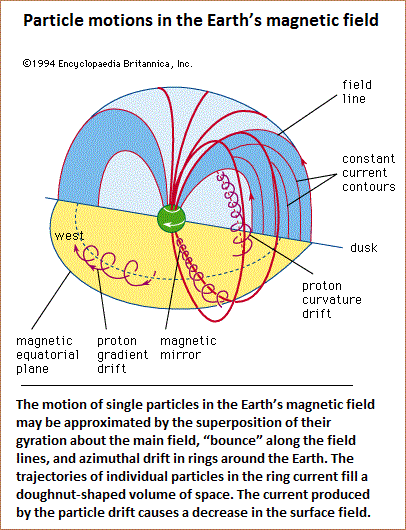
The point to be made with all the charts and images comparing age differences is to point out that different life forms have different life span rates and that the life span of humans is an accelerated one. Not only can the speed of an object affect other things different if it runs into them, but can also be affected on by a perceptively slow moving object (such as an environmental event). For example, a fast moving lava flow intersecting with a slow or non-moving body of water will be greatly affected by it. If humanity moves slow in the Sun it may get a suntan or sunburn. While some fast moving environmental events affect humans in easily recognizable ways (such as floods, tornadoes, blizzards, hail, etc...), slower processes may not be recognized until after a lengthy exposure, if one can remove themselves from the exposure to make the observation. Since humanity is subjected to the three aforementioned environmental sequences on a continual basis, it is difficult to get a visual/conscious grasp of how humanity is being affected. Nonetheless, humanity is adapting to the changes. And with theses adaptations to incrementally occurring environmental deteriorations, is a change in beliefs, ideologies and theories. In effect, all our ideas are adaptive mechanisms to environmental changes attempting to maintain some level of homeostasis... or equilibrium. In other words, they are rationalized adjustments.
Another criteria imposing itself on humanity's conservation-of-perception behavior is that related to the rotation rate of the Earth (besides the eventual loss of the geomagnetic and ionospheric dynamo's along with the associated currents), is that when we look at the arrival of different species in relation to the time period which is then correlated to the speed of rotation, we find that humans arrived on the scene when the rotation rate entered into the 23 hour period, while other life forms arose in 22, 21, 20, etc. hour-per-day rotation rates. As such, one must wonder if humanity is "rotation rate specific", in that because its physiology was born during a specific rate of rotation, this same physiology can not adapt (very easily) to different rotation rates? Is humanity,... indeed, all life forms rotation rate specific, with some more adaptable to changes in rotation speed than others... even if mechanisms of adaptation are particularly slow? Did the rotation rate have something to do with the size of large insects in the Pennsylvanian epoch, or the Large dinosaurs, or large aquatic forms of life? If we can detect and measure the behavior of particles in the Earth's electro-magnetic field, changes occurring in the deterioration of the field may also have a biological and cognitive parallel. But we won't know what to look for or why, unless speculations such as the present discussion brings such an idea to mind.
Using a small hand-held calculator (an instrument notoriously bad for calculating large values), the following two illustrations of the Earth's rotation gives a general idea of how much the Earth has slowed, and the adjustments needed to be made during the course of developing the following table.
 The rate of rotation today. 1000 MPH at equator 1 day =23 hrs, 56 min., 4.09 sec. |
 The rate of rotation billions of years ago. 3000 MPH at equator approx. 8 hour day |
| Years Ago | Epoch | Period/Age | Era | Eon | Major Events | approx. rotation rate \value used in equation) |
|
|---|---|---|---|---|---|---|---|
| Present day | Holocene | Quaternary | Cenozoic | Phanerozoic |
23.93 hours \.0000001 |
||
| 11,430 (The person in the "Man From Earth" movie is about 3,000 years older than this.) | Pleistocene | Evolution of fully modern humans. Extinction of many large mammals. |
23.934 hrs \.0000001 |
||||
| 1.81 million | Pliocene | Tertiary | Neogene | 23.8977 \.0000002 |
|||
| 5.33 million | Miocene | 23.969 hrs/ 341.28 days \.0005 |
|||||
| 23.0 million | Oligocene | Paleogene | 23.866 hrs/ 389.116 days \.0005 |
||||
| 37.2 million | Eocene | Appearance of first "modern" mammals. | 22.8 hrs 384.465 days |
||||
| 55.8 million | Paleocene | 22.6 hrs | |||||
| 65.5 million | Cretaceous | Mesozoic | Dinosaurs reach peak, become extinct. Primitive placental mammals. |
22.47 hrs/ 342.770 days \.0009 |
|||
| 146 million | Jurassic | Marsupial mammals, first birds, first flowering plants. | 22.4532 hrs | ||||
| 200 million | Triassic | First dinosaurs, Egg-laying mammals. | 19.87 hrs | ||||
| 251 million | Permian | Paleozoic | Permian extinction event- 95% of life on Earth becomes extinct. | 18.84 hrs | |||
| 299 million | Carboniferous | Pennsylvanian | Abundant insects (some large), first reptiles, coal forests. | 17.86 hrs | |||
| 318 million | Mississippian | Large primitive trees | 17.48 hrs | ||||
| 359 million | Devonian | First amphibians, clubmosses and horsetails appear, progymnosperms (first seed bearing plants) appear. | 20.2922 hrs \.0000001 |
||||
| 416 million | Silurian | First land plant fossils. | |||||
| 443 million | Ordovician | Invertebrates dominant. | |||||
| 488 million | Cambrian | Major diversification of life in the Cambrian explosion. | |||||
| 542 million | Ediacaran | Neoproterozoic | Proterozoic | First multi-celled animals. | |||
| 600 million | Cryogenian | Possible snowball Earth period. | |||||
| 850 million | Tonian | ||||||
| 1.0 billion | Stennian | Mesoproterozoic | |||||
| 1.2 billion | Ectasian | ||||||
| 1.4 billion | Calymmian | ||||||
| 1.6 billion | Statherian | Paleoproterozoic | First Complex single-celled life. | ||||
| 1.8 billion | Orosirian | ||||||
| 2.05 billion | Rhyacian | ||||||
| 2.3 billion | Siderian | ||||||
| 2.5 billion | Neoarchean | Archaean | |||||
| 2.8 billion | Mesoarchean | ||||||
| 3.2 billion | Paleoarchean | ||||||
| 3.6 billion | Eoarchean | Simple single-celled life. | 7.333 hrs \.0004 |
||||
| 3.8 billion | Hadean | 20.0791 hrs \.0000001 |
|||||
| 4.1 billion | Oldest known rock. | ||||||
| 4.4 billion | Oldest known mineral. | ||||||
| 4.57 billion | Formation of Earth. | 2.842hours \.0004 |
|||||
Sources:
Rotation Rate Specific page 2
Let's Talk Peace page 28
Speaking about a possible rotation rate specificity brings to mind the cycle of biological rhythms known commonly as circadian (24 hour) rhythms. These rhythms are kept in-tune by associated phenomena such as the day/night cycle and the geomagnetic field, both of which change according to the (roughly) 24 hour period. A receding moon and slowing rotation rate would affect these "tell-tale" signs picked up as time-coordinating clues by our physiology. However, whether or not there is a rotation rate specificity for different life forms, the point I want to add to the discussion is that our usage of 'enumeratable' patterns may themselves be indicators of biological rhythms as well. Because we see a high usage of patterns-of-two (bi, di, duality, double, pair, opposite, etc...) and pattern-of-three (triad, trinity, triple, ternary, etc...) more so than other patterns, this behavior may be an indication of the overall cognitive health or illness of humanity. Whereas we view other recurrences of thought usage as indicators of mental, emotional and physical health, because humanity is using a small number of number-identifiable patterns may either-and/or reflect the state of human physiology as well as the conditions of the environment. However, since this idea is not part of the typical anthropo-medico-analysis of humanity over long periods of time, the accumulation and tabulation of such data is made more difficult because number usage identification is associated with what is called "numerology" which is defined in a disparaging reference to the occult.
Whereas we can identify an increase in the usage of particular number patterns and the disusage of others, (for those of us taking the time to make such a reference), we generally do not interpret such an occurrence in anything but a cultural sense of interest. For example, we may well look back upon our own lives with an effort to trace the beginning of our interest in one or more number-related pattern recurrences... and whether or not we can pin-point the exact moment or period of transition away from the person we were prior to this... is an auxiliary point to the present realization that we underwent some transformation which led us to the point of our interest in such a pattern today... and that we have not stopped in terms related to what may be viewed as a traditional "numerological" orientation. In other words, we are not actually interested in numerology but the representation of enumeration as a cognitive activity that is evolving several steps beyond mere numerology.
Because there is an identifiable limit of number usage as a pattern framer, and that this differs from earlier interests that we may now label as having been a curiosity and superficiality, our cataloguing of the "threes" phenomena in association with other number patterns will supply a record for those in the future who will be able to compare the changes in numerically referenced ideas and behaviors to distinguish changes, if any, that are occurring. Why is it we can see an increasing trend in Indo-European related communities as well as non-Indo-European communities in some regard? Why is it that only a few of us come to acknowledge the obvious presence of such a usage while others... even upon being told about such a pattern, remain... for the most part, oblivious to it? Indeed, why does crop up so very often in particle physics, and other sciences, and can be seen as an increased phenomena in conventions where a pattern-of-two or some other pattern (such as seven) had previously been a dominant character? Is there a change occurring in the mental state of humanity and/or its physiology... due to an increasing deterioration or a defining moment of environmental deterioration?
Is there some other pattern more frequent that a two or three or something else that we are overlooking... since there was a time we overlooked the "now obvious" presence of twos, threes, and other patterns? Why is there a conservation of number? Why is it that I can go into someone's house and see that they have a small, medium, large arrangement of bathroom towels hung up, own three pets, have three children, shop frequently at three stores, watch three programs on TV, consistently eat with a knife, fork, and spoon (etc...), yet be so unaware and even dismissive when they are introduced to such a recurrence of behavior? Why do we find a limitation of numerically identifiable patterns being used in the sciences? Why is there an ongoing conservation of number-relatable patterns usage if it is not due to an environmental imposition, even if we were to use some other identifying symbol than numbers? Do our recurring usage of a small set of numbers refer to the state of deterioration we are in... as if it were a clock counting down to an eventual demise?
Since we use some number-related patterns more than others, is it profitable to our research if we describe such out-croppings as an emphasis related to a particular influence, like a yelp or laugh when being pinched or tickled? Are they behavioral (cognitive) extremes related to something good, bad or some mediocrity of development? Are they like the jutting-out of a solar flare or a fish jumping our of water? Or perhaps the periodic howl of a coyote or wolf? Or is it more instructive to view them as indentions instead of thrustings? In any event, for one reason or another, they stand out and we continue to speculate different approaches to an analysis thereof.
Page initially created: Friday, 09-Feb-2018... 3:21 AM
Initial Posting: Friday, 09-Feb-2018... 11:26 AM
Herb O. Buckland
herbobuckland@hotmail.com
